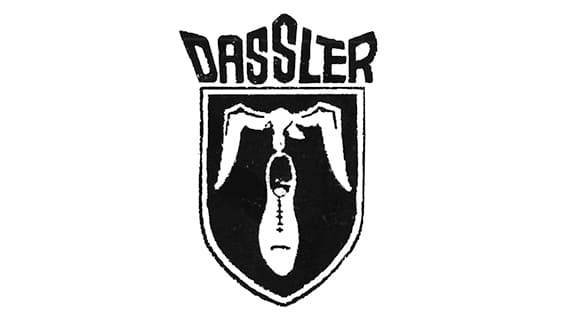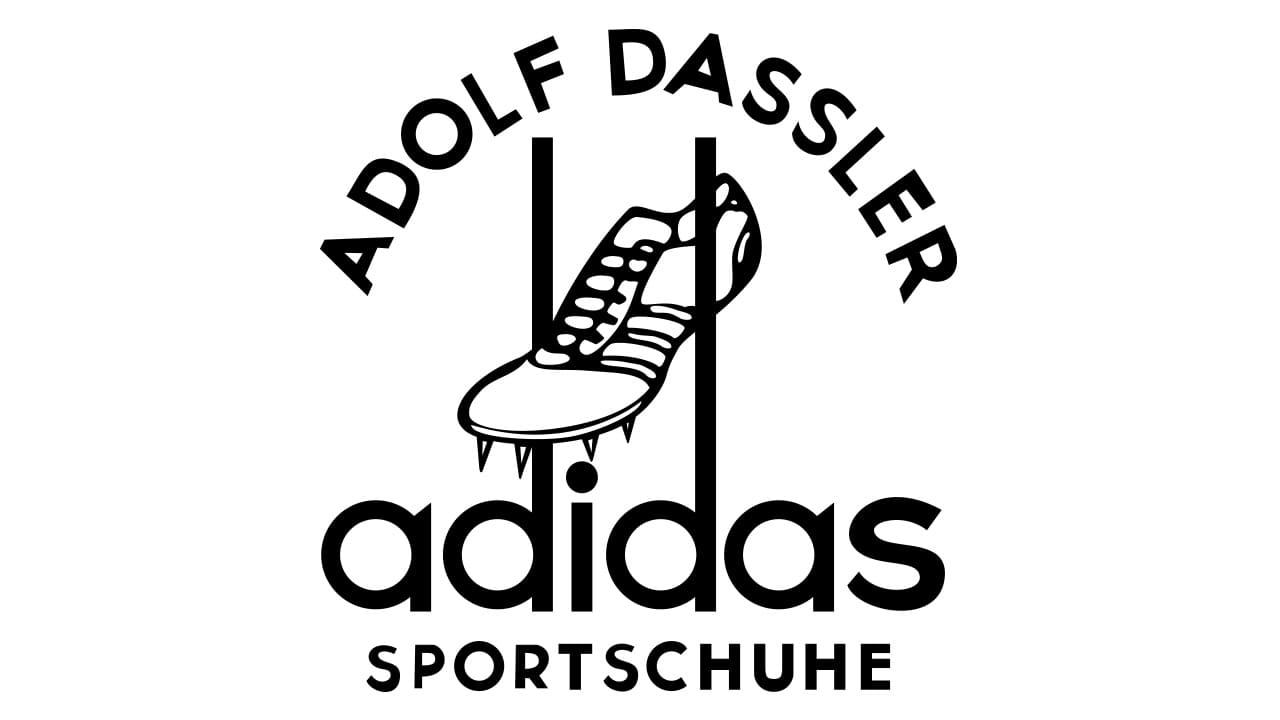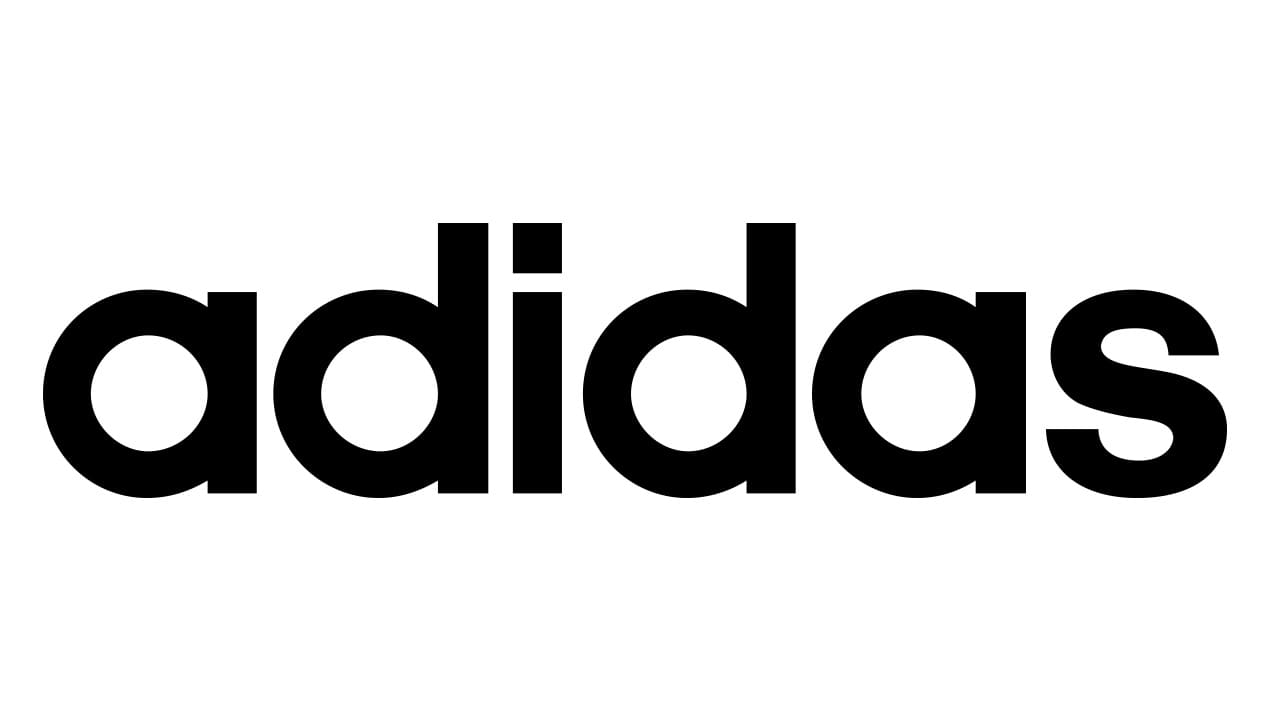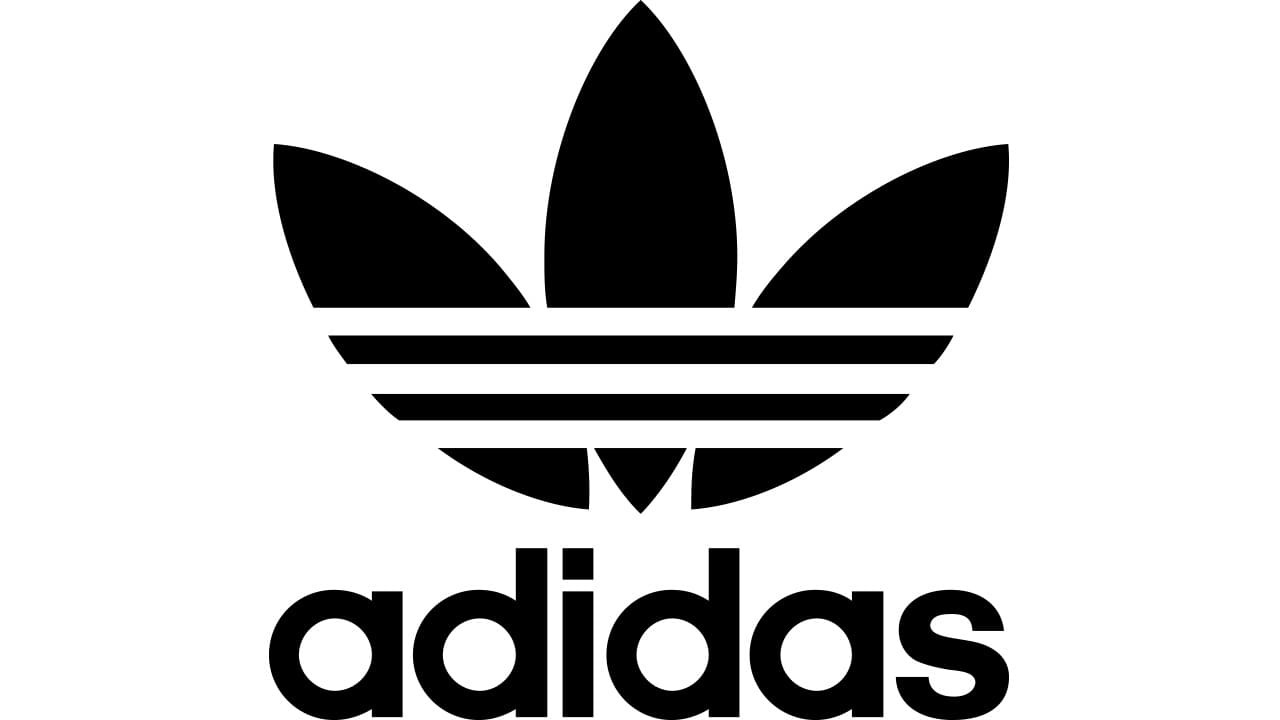Adidas AG is a multinational corporation, founded and headquartered in Herzogenaurach, Germany, that designs and manufactures shoes, clothing and accessories. It is the largest sportswear manufacturer in Europe, and the second largest in the world, after Nike. It is the holding company for the Adidas Group, which consists of the Reebok sportswear company, TaylorMade golf company (including Ashworth), Runtastic, an Austrian fitness technology company and 8.33% of German football club Bayern Munich. Adidas’ revenue for 2016 was listed at €19.29 billion.
Source
The Adidas logo is so far-reaching and recognizable that it’s practically difficult to accept that the notable three stripes once had a place with a totally unique organization.
Meaning and history
At the point when Adolf Dassler began making sports shoes in his mom’s pantry in Herzogenaurach, Germany, he most likely didn’t dream that this was the beginning of one of the world’s biggest games brands.
In 1924, his more seasoned sibling Rudolf began to work with him. Throughout time, their items acquired acknowledgment. By WWII, Adolf and Rudolf sold around 200,000 sets of shoes every year.
After the siblings split up in 1947, every one of them established his own organization. Adolf Dassler enlisted Adidas AG, while Rudolf enrolled in an organization called Ruda. Albeit both the siblings utilized similar components to coin the names for their organizations (consolidated the principal letters of their names and last names), Adi’s abbreviation end up being more effective, while Ruda was before long renamed Puma.

1924
The first logo included the second name of the prime supporters, Dassler. Beneath, you could see a boot conveyed by a bird (the insignia presumably should show how light the shoes were). The plan was set inside a safeguard.

1949
After the organization was parted into two independent firms, “Adidas” began to be utilized. The first Adidas logo highlighted the organization’s name. The drawn-out closures of the “D’s” were “holding” a shoe. The name of the organizer, Adolf Dassler, was angled above it.

1950
Just the name of the firm was left. It was given in white inside a square shape with adjusted corners. The finishes of the “a’s” developed more honed.

1967
The sharp finishes of the “a’s” were supplanted by ordinary ones, the spot was replaced by a square, the closures of the “s” developed longer. All in all, the plan became heavier. This wordmark is frequently utilized even presently.

1971
Notwithstanding the wordmark, the alleged trefoil was added. While you could, in any case, see the famous three stripes, there was additionally another component, which should address the variety of the Adidas range. This adaptation is as yet utilized for the Adidas Originals line.
1991
While keeping the three stripes, the planner added more force and weight to the image. The stripes became bolder and were turned. You can see this rendition on the items from the Performance line. At the same time, initially, it was made for the Adidas Equipment range.

2002
Here, the three stripes embrace a lighter, more refined look. They go across a dark circle, with the name of the brand put underneath. Utilized in the Adidas Style range.

2005
This is the most ordinarily utilized Adidas logo. The notable stripes are put to one side of the lowercased lettering “Adidas.”
Old logo (Three stripes)
Thinking back to the 1940s, a Finnish organization named Karhu Sports fabricated footwear adorned with three stripes. Adolf Dassler loved the plan and how it looked on the sides of the shoes so much that he chose to get it. As Karhu Sports was encountering monetary issues because of WWII, its proprietor, in the end, consented to offer the brand name to the insignia for a likeness of €1,600 and two containers of bourbon. Presently, Adolf Dassler began to put the three stripes on the sides of the footwear delivered by his organization.
The logo appeared on Adidas footwear in 1952, following the 1952 Summer Olympics. Dassler himself felt totally infatuated with the insignia and surprisingly alluded to his firm as “The three stripes organization.”
It wasn’t the brand’s just logo, however. Another, more perplexing image was produced for print/showcasing purposes. Here, a games shoe was portrayed with “Adidas sportschuhe” beneath and “Adolf Dassler” above. The shoe was sandwiched between the long stems of the “d’s.” The organization picked one of the intense adaptations of the ITC Avant Garde Gothic text style.
We make the reference to the three stripes subject disclosed in 1962. It was then that the great tracksuits with the stripes going down the sleeves and legs were first presented. No compelling reason to say that such tracksuits have gotten exemplary are as yet sold today.
Trefoil symbol
In 1971, ahead of the Olympic Games in Munich, the organization divulged the alleged Trefoil. It joined the famous three stripes with three shapes looking like leaves. “Adidas,” in a marginally unique sort, was put beneath.
The brand would need to change the old Adidas logo because the organization was attempting to emphasize the reality of the amount it had developed since Adolf Dassler set it up in 1948. Be that as it may, the brand hasn’t disposed of the first logo by and large – it’s actually utilized on certain things. For example, the Trefoil token is being used on the Originals scope of attire and coaches; it tends to be seen on the California shirt and Pharrell Williams Tennis Hu mentors.
Mountain emblem
Before the finish of the 1980s, the organization was searching for methods of refreshing its image personality. However, that was a test as the image was to remain immediately recognizable and save a clear association with its notable Trefoil archetype. This might have been the motivation behind why, however, seven years passed between the second when the logo was planned (1990) and revealed (1997).
Presently, the three bars were situated upward then turned 30 degrees, which made a mountain shape. The mountain idea was utilized to encapsulate the assurance a competitor has, his concentration, and his objective situated attitude. Like this, the organization was attempting to suggest that the gear bearing the mountain logo was intended to assist an individual with accomplishing his significant standards.
Thinking about the Adidas importance referred to above, it was typical that the insignia was first utilized as a game logo, I. e. put distinctly on athletic gear, yet over the period, it obtained the situation with the standard logo across all attire.
Horizontal stripes
Throughout time, the requirement for another logo ended up being unmistakable. Furthermore, once more, a fundamental repositioning of the notable stripes made an altogether new impression. This time, the dark bars were set on a level plane. Their length was adjusted, as well: the lower line was the longest, the one at the top was the most limited (around 33% of the longest queue), while the subsequent stripe was twice the length of the briefest one. The stripe configuration was set close to the wordmark symbol, which clearly stayed unaltered.
Other versions
Today, the organization utilizes more than one insignia, so the logo shirt is bearing relies upon the reach it has a place with. For example, the Adidas Style Essentials range, which manages the design market, regularly utilizes the logo where the mark three stripes are put inside a circle shape.
Likewise, ahead of the 2008 Olympics, the organization divulged another logo, a blend of the Trefoil image and the Olympic light.
Who created the logo?
Albeit the organization hasn’t uncovered the names of all the colleagues, we realize that when the Three Bars Adidas logo was being created, the Global Creative Director at Adidas was Peter Moore, quite possibly the most influential name in the athletic footwear industry. He impacted the idea.
Moore’s involvement with active apparel surpasses thirty years. He turned into the leading worldwide innovative chief at Nike. He was among the individuals who assisted the brand with accomplishing its present job. In the wake of fostering the primary Air Jordan idea during the 1980s with his associate Rob Strasser, he passed on the organization to help establish a games advertising organization Sports Inc. situated in Portland. Additionally, his organization with Rob Strasser brought about making Adidas America Inc. in Portland, where Moore turned into the Worldwide Creative Director.
Font
The decision of typeface appears to consummately fit the clean, practically Spartan brand personality, which is typical for Adidas. Since 1949, when the organization was established, the logo was consistently founded on the ITC Avant Garde Gothic text style.
There has been some messing with the subtleties of the state of the letters and their weight in the Adidas image. Adaptations that showed up later were bolder than their trailblazers; the “a’s” had a marginally unique upper right end, while the speck over the “I” abandoned a circle to a square in 1971. Likewise, the extents of the “d’s” developed nearer to those of the “a’s” beginning from 1971. But then, the actual construction of the glyphs and how they were situated continued as before. That is the reason the general impression has remained totally predictable. It’s not really conceivable to identify the distinction in the typography of various logo variants except if you look at them next to each other.
Color
The organization has been astoundingly predictable in the shading plan of its essential token. The dark logo on the white foundation has been utilized since the time the organization began its work. But, as this is the sort of token set on a broad scope of results of differing colors, it’s just expected that a creator needs to change the shade of the image each time.
Monochrome logos with similar color:








